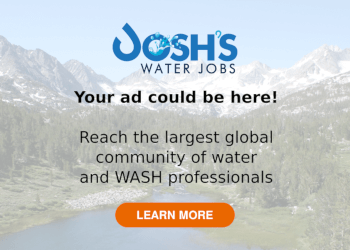Mission
Currently there is a huge lack of publicly available data on some basic variables such as water turbidity, chlorophyll-a level or suspended particulate matter in riverine environments and reservoirs. This information is crucial to improve lake eutrophication monitoring, sedimentary and carbon fluxes quantification in rivers or for pollution assessment such as for gold mining-induced impacts. With the forthcoming CNES IMHOTEP/HydroWeb-Next (HWN) platform, this gap in data could be attended with the automatic delivery of water quality (WQ) products for inland waters based on Sentinel-2 imagery. With the release of this innovative platform we can expect that the interest for remote sensing (RS) information of inland WQ could significantly increase.
A recurrent question stressed by water resource stakeholders and scientists: how to improve revisit time (temporal resolution) without increasing costs in order to frequently monitor the water resources variability? That is a key issue for WQ processes, in particular during extreme events like floods and droughts. As an example, it is considered that 80% of the sedimentary fluxes in most river systems occur during less than 2% of the time. This means that, the ability to frequently revisit water bodies is essential to provide a fair assessment of processes like sediment transport and siltation, eutrophication, harmful-algal blooms (HAB) and pollution monitoring.
The HWN processing chain is called “OBServation de la Couleur des eaux Continentales” (OBS2CO) and it is based on the work by the THEIA/CES “Qualité des Eaux continentales” and join different python tools such as GRS and WaterDetect, developed by the research teams of IRD (GET laboratory), OFB and INRAE. Primarily, HWN will use only Sentinel-2A/2B MSI mission data for its first version. This means that the temporal resolution for this product will vary from 5 days up to several weeks (during cloudy periods), a temporal resolution that is still unsuitable for continuous WQ monitoring purposes.
In order to tend for this need, this PhD project proposed by the GET lab, aims at extending the OBS2CO processing chain for WQ. This should be accomplished by quantifying the viability and quality of the integration of different earth observation satellites in order to deliver WQ variables at an increased rate when compared to single platform-based products. While multi mission monitoring has been developed for several land surface applications, there are no systematic studies for inland waters. For this reason, beyond Sentinel-2, we aim at assessing the benefits of: I) Improved spectral resolution satellites (Sentinel-3) providing near-daily coverage and new hyperspectral missions (EnMAP); II) Medium/high resolution multispectral sensors such as Landsat 8-9, Planet and forthcoming TRISHNA mission.
When put together, these satellite could produce unprecedented and systematic WQ products. While enhanced spectral resolution will improve the ability to robustly retrieve WQ parameters such as chlorophyll-a, dissolved organic matter or HAB Microcystis, the integration of multiple multispectral platforms will make it possible to deliver near daily data. However, to deliver homogeneous WQ products based on such multi-mission data, different issues must be tackle: the different spatial and spectral resolutions, their impact on atmospheric and glint correction, variable radiometric accuracy and sun-viewing angle acquisition geometry.
For assessment and validation of the new WQ composite products, the PhD will benefit of an exceptional dataset consisting of continuous hyperspectral RS reflectance measurements (every 30 seconds) by an innovative permanent radiometric station developed with the GET lab that was installed this year along a reservoir in the Amazon region. This region, that offers a wide range of water classes and atmospheric conditions, will make possible to fully assess the radiometric accuracy of the multi-mission composite pipeline, as well as the final WQ maps. To our knowledge, there are no such datasets available over inland waters, posing a unique opportunity for this PhD project.
The PhD student will be hosted at the GET lab in Toulouse. GET develops for 17 years the use of RS for WQ including satellite data, airborne and from field measurements, with a large network of academic and end-user partners in France and abroad. Starting with theoretical studies, GET has also directly participated in the development of websites with UNESCO (World WQ Portal) and the Brazilian Water Agency (Hidrosat portal). Motivated by the opportunities and trends in Big Data and Machine-Learning, and also taking into account the availability of a HPC cluster at CNES (HAL), this project proposes to create a methodology to tackle the integration of multi-sensor data, producing WQ variables and combining them into a series of WQ Indicators that would be further used in a potential global scale inland water index class map.
======
For more Information about the topics and the co-financial partner (found by the lab !), contact Directeur de thèse : jean-michel.martinez@ird.fr
Then, prepare a resumé, a recent transcript and a reference letter from your M2 supervisor/ engineering school director and you will be ready to apply online !
Profil
Remote Sensing
Laboratoire
GET
Message from PhD team
More details on CNES website : https://cnes.fr/fr/theses-post-doctorats
